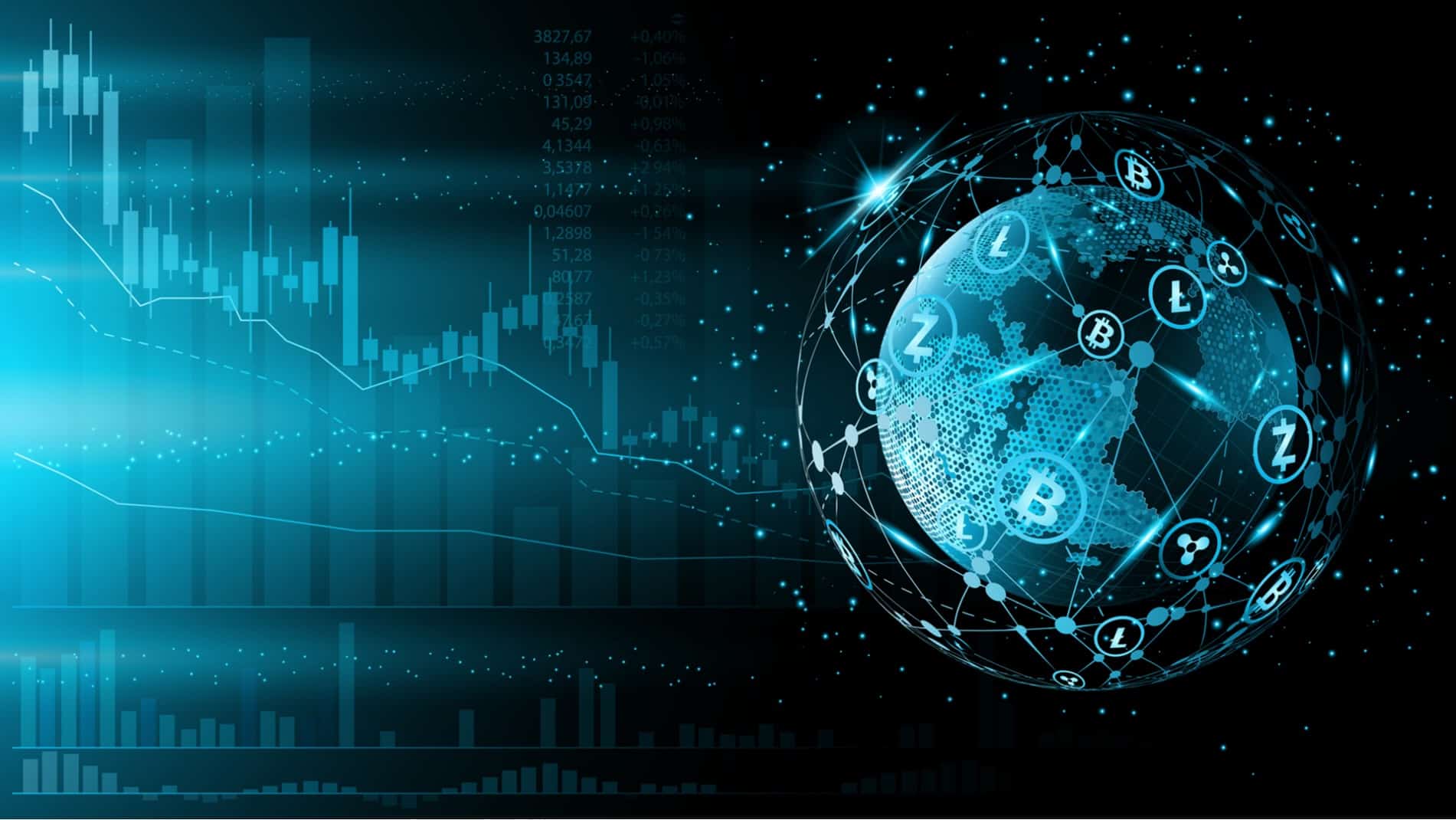How Russia’s War and West’s Response Are Impacting Cryptocurrencies
8 min readTable of Contents
When Russia launched an unprovoked invasion of Ukraine, its neighbor and trading partner, the world reacted with horror and anger. The West, led by the US and the EU, immediately imposed severe sanctions on President Vladimir Putin’s regime, including barring its access to foreign reserves. The global economy has been impacted by rising energy and commodity prices, and capital markets are facing uncertainty and the long-term effects of Putin’s aggression and the worst military tragedy on the European continent since World War II.
The cryptocurrency community was also shaken by this tragedy. Due to the peer-to-peer nature of blockchain technology, there are a number of questions about the usefulness of BTC and other digital assets in the war zone and in Russia itself, where ordinary citizens have lost purchasing power as the ruble craters and access. to financial infrastructure, such as the Swift system.
In this report, we unpack the macroeconomic forces at work and look at how blockchain-based solutions can play an important role as the war rages on.
In a way never seen before, blockchain and web3 are demonstrating their value in contributing to the humanitarian effort to bring aid to Ukrainian refugees and provide support to Ukrainian citizens defending their country against the Russian military.
Before delving into the specifics of these initiatives, let’s understand how Russia and Ukraine affect the macroeconomic picture.
Seismic shift in global markets
Russia is one of the biggest economies as a major producer of energy and commodities, while Ukraine is a global leader in wheat production. Russia is the world’s third largest oil producer and holds about 5% of the world’s reserves. Half of exported oil is consumed by European countries, fueling a third of Europe’s oil consumption.
Russia is also the largest producer of natural gas and controls 25% of the world’s gas reserves. As a result, the price of crude oil soared when sanctions took effect. So it also has gasoline, natural gas, coal and heating oil. An increase in the price of electricity will affect Proof-of-Work blockchains such as BTC, which require high energy consumption.
Russia also has a strong grip on the fertilizer industry due to its high production of nitrogen, but it is also a major exporter of copper, nickel, palladium and platinum, elements necessary for the production of chips and graphics cards used to mine cryptos or play high end. At the same time, Ukraine is the sixth largest producer of titanium, a metal mainly used in manufacturing industries, and the third largest producer of neon gas.
Too big to fail?
Global leaders also sanctioned Russian banks, while payment service providers halted operations in the country. It is estimated that by mid-2021, the Central Bank of Russia has about $650 billion in reserves; however, restrictions will limit this amount to approximately US$230 billion, as 65% of these reserves are held abroad in currencies such as the US dollar, euro, pound sterling and gold.
The sanctions also mean that at least seven of Russia’s most critical financial institutions will no longer be part of SWIFT, a global messaging system that is crucial for cross-border payments. SWIFT is used by more than 11,000 institutions generating more than 35 million transactions daily.
Similarly, payment giants Visa, Mastercard, American Express and PayPal have ceased operations in the sanctioned country, leaving millions of users without a critical monetary gateway. While Russia’s citizens and businesses may eventually find alternatives to SWIFT, the financial restrictions will severely damage their economy.
One of the advantages presented by blockchain is the ability to allow peer-to-peer transactions without intermediaries, creating virtually borderless assets. This kind of decentralized financial ecosystem could be useful to millions of Ukrainians and Russians who have been deprived of a direct payment gateway.
However, the situation in Russia is much more serious and complex. In addition to PayPal, Visa and Mastercard, payment and remittance services from organizations such as Apple (Pay), Google (Pay), Wise, Remitly and TransferGo have also disrupted operations in that country, bringing additional obstacles to a Russian working class that could also be at risk of credit default.
As a result, the most prestigious rating agencies significantly reduced Russian credit rates. S&P and Moody’s downgraded Russia’s sovereign ratings to junk, while Fitch downgraded Ukraine’s credit rating. The Russian ruble has suffered significant devaluations of almost 33% in the last seven days and could fall further.
To counteract the inflationary effect of a currency depreciation, cryptocurrencies and even other types of digital assets such as NFTs can be used as a hedge. We’ve seen this in hyperinflationary scenarios like those in Zimbabwe and Venezuela.
However, the advantages presented by blockchain in terms of accessibility, decentralization, security and store of value transcend the economic context of a digital currency. We are witnessing the social potential of an organized crypto community.
Crypto community united by Ukraine
Blockchain has shown its potential to create a positive impact on society on different occasions. This time, the world witnessed how celebrities, business people and people from different backgrounds came together to create web3 organizations called DAOs to support the Ukrainian people and their government in trouble.
In a historic moment, Ukraine started to receive contributions in different networks. The Ukrainian government received around $10 million worth of tokens and NFTs (including CryptoPunk #5364 worth approximately $212,000) in its ETH wallet, most of which it collected after announcing a possible airdrop to contributors. The central authority has also made wallets available for BTC, Polkadot and Tron networks.
The creation of blockchain wallets by Ukraine is one of the first occasions that the government of a recognized nation uses cryptocurrencies, joining El Salvador and Venezuela. However, the case of Ukraine marks the first time the government has used them for humanitarian purposes.
Furthermore, established blockchain projects like Uniswap and independent DAOs acting as NGOs have joined the Ukrainian cause. UkraineDAO, an initiative started by Pussy Riot, the Russian punk rock group that has faced multiple arrests for vocal protests against the Putin regime, has raised more than $7 million in writing, which will go entirely towards helping Ukrainians.
Unchain Ukraine, a DAO created by Illia Polusokhin, co-founder of the Near blockchain and experienced individuals at web3, is another example. Unchain Ukraine has raised over $2.1 million (mostly in NEAR) and receives donations from nine networks.
Support in the Ukraine crisis also comes from the NFT space. For example, Reli3f , a humanitarian aid initiative started by Andrew Wang and members of the web3 community. This project consists of 7,400 NFTs from 37 different NFT artists, including Fvckrender, Pablo Stanley, and Defaced, and has raised and distributed at least $1 million in ETH to support people in Ukraine.
NFT artists from different circles have also been quite active. Activist and artist Shepard Fairey will donate the proceeds from his upcoming collection to the humanitarian crisis in Eastern Europe. Meanwhile, 200 Ukrainian artists from the country’s most renowned art galleries worked together to create an NFT that will be auctioned at a later date.
According to Elliptic, Ukraine received nearly $60 million in crypto from more than 118,000 wallets, including NFTs, a $5 million donation from Polkadot founder Gavin Wood, and a $10 million donation from Binance. . So, after considering all the macroeconomic implications and noticing the support coming from web3-like organizations, what can you expect from blockchain and crypto in the short term?
What does this mean for blockchain and cryptos?
The crisis will create a domino effect across different industries and consolidate cryptocurrencies as a potential tool to provide relief to Ukrainians and average Russian households.
Demand for cryptocurrencies has been increasing since recent events, particularly in the affected regions. The amount of BTC purchased in hryvnias and rubles is at a nine-month high. Since February 24, the amount of BTC purchased with rubles has at least tripled, while demand in Ukraine has almost doubled. Rising demand for BTC triggered a 6% premium in both regions. WhiteBit in the case of Russia, while Binance and Kuna lowered the BTC-UAH trading pair with a 6% premium in Ukraine.
Due to the sudden increase in demand for cryptocurrencies, the asset price has rebounded, defying the downtrend that has been detectable since November. BTC reclaimed its support line above $38,000 while ETH broke above $2,500. However, a highly volatile period is widely expected, bringing an interesting challenge from a business perspective.
Furthermore, the devastating effects of the current business situation and unstable financial environment can trigger consequences ranging from people defaulting to massive bank runs and bailouts. This scenario will generate even more distrust in the centralized banking system, paving the way for the adoption and recognition of digital assets and cryptocurrencies.
However, if Russia chooses to go this route, it is no exaggeration for opposing countries to try to ban cryptocurrencies used to circumvent sanctions, especially if an agreement with China is met. While major exchanges like Kraken and Binance refused to restrict Russians from using their platforms, companies like OpenSea and Consensys began cutting blacklisted regions.
It is also worth mentioning that Russia is no stranger to cryptocurrencies. The exact amount of cryptocurrency owned by Russians varies from source to source, ranging from $22 billion to $220 billion or 12% of the world’s crypto assets. So, may be due to consider the digital approach. Furthermore, Russia accounts for nearly 14% of the BTC hashing power needed to mine blocks, the third largest BTC mining center in the world after the US and Kazakhstan.
Interrupted savings
The adoption of blockchain technologies appears to be imminent. Not too long ago, in 2019 to be precise, two top executives at JP Morgan Chase called BTC a fraud and an asset whose value would only thrive in a dystopian environment characterized by a loss of faith in all major reserve assets. Three years later, the stance of one of the major US banks has shifted 180°. JPMorgan is believed to have large stakes in ConsenSys and also became the first financial institution to formally open a space in the metaverse, revealing the Onyx hall within Decentraland.
After two years of struggling with a COVID pandemic that has disrupted economies, supply chains and the lives of millions, the war for Ukraine is finding a more digitized society battling one of the highest inflationary periods in years. The financial impact of Russia’s decision will be felt years from now and could potentially change the traditional financial ecosystem.
It is still too early to say the full effects of this conflict and how the world will react. For now, we’re all focused on one thing; the war ends soon with as few lives as possible lost.
*DappRadar is an NFT and DeFi Dapp platform

















